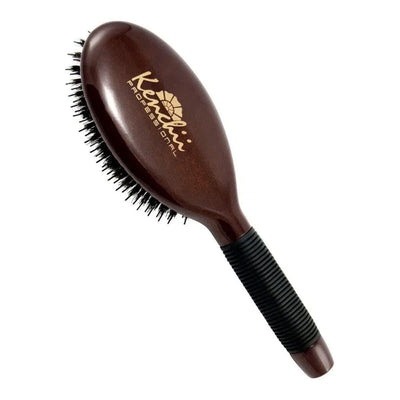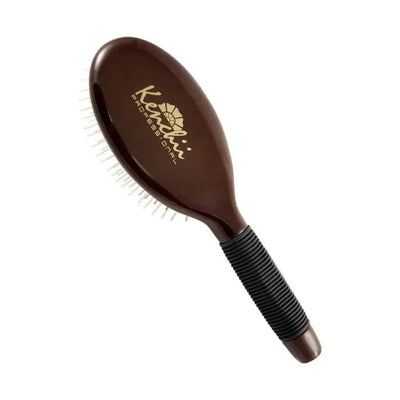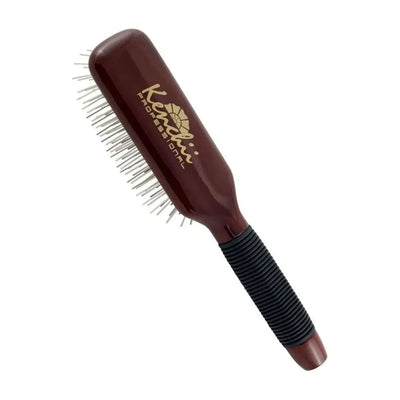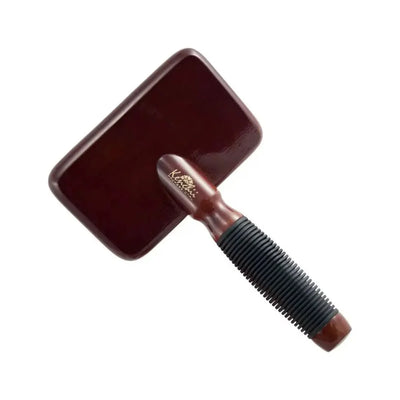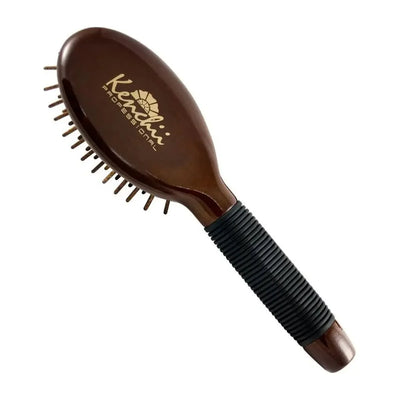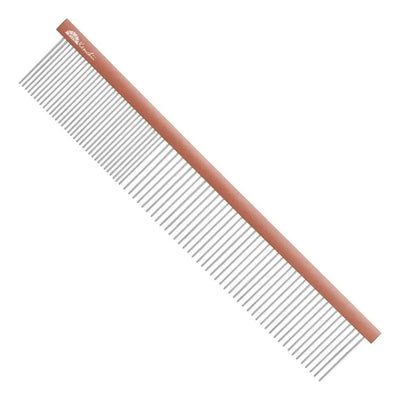
Dog Brushes & Combs
Filtrer et trier
The secret to a healthy, shiny coat and a happy pup lies in the right grooming tools. Our collection of Dog Brushes & Combs is designed to tackle mats, tangles, and shedding, no matter your dog’s coat type. Whether your furry friend has short, sleek hair or a thick double-layered coat, we have the perfect solution to keep their fur soft, smooth, and tangle-free. From gentle soft-bristle brushes for short-haired breeds to de-shedding tools and wide-tooth combs for long or curly coats, every grooming session becomes a breeze. Regular use not only reduces shedding but also distributes natural oils to promote healthier skin and a vibrant coat. Trusted by professional groomers, these tools make grooming easier while ensuring your dog looks and feels their absolute best. Because every dog deserves a little extra care and attention.
Q&A Guide to Choosing the Best Brushes and Combs for Your Dog
Q1. Why is it important to choose the right brush or comb for my dog?
Choosing the right grooming tool helps maintain your dog’s coat, promotes healthy skin, and prevents uncomfortable matting or shedding. The right brush or comb can make grooming easier and more enjoyable for both you and your furry friend.
Q2. What types of brushes are available for dogs?
Here are the main types of dog brushes, along with their common uses:
- Slicker brushes: Perfect for removing mats and tangles in medium to long-haired dogs.
- Bristle brushes: Great for short-haired breeds and for adding shine to the coat.
- Pin brushes: Ideal for dogs with thick or curly coats, such as Poodles or Golden Retrievers.
- Rubber brushes: Best for dogs with short or smooth coats and are excellent for removing loose fur during shedding.
Q3. How do combs differ from brushes?
Unlike brushes, combs are designed to detangle and remove loose hair closer to the skin. Dog combs come in a variety of styles, including wide-toothed combs for thicker coats and fine-toothed combs for delicate hair or finishing touches.
Q4. What should I consider when choosing a brush or comb for my dog?
Take into account your dog’s coat type, length, and grooming needs:
- Short-haired dogs benefit from rubber brushes or bristle brushes.
- Long-haired dogs need slicker brushes, pin brushes, or wide-tooth combs to manage tangles.
- Double-coated breeds (like Huskies) require an undercoat rake or slicker brush to tackle shedding.
Q5. Can I use human brushes or combs for my dog?
It’s not recommended. Tools designed for humans might not be effective or could even irritate your dog’s skin. Dog brushes and combs are specifically created to meet the needs of their unique coat types and sensitive skin.
Q6. How often should I groom my dog?
The frequency of grooming depends on your dog’s breed and coat type. Short-haired dogs may only need a quick brushing once a week, while long-haired or shedding breeds might require grooming several times a week to prevent tangles and manage loose fur.
Q7. What’s a good way to introduce grooming to a nervous dog?
Start slowly and make grooming a positive experience by combining it with treats and praise. Allow your dog to sniff the brush or comb, and start with short grooming sessions to build their confidence over time.
Q8. Are there multi-purpose tools available?
Yes! Some grooming tools combine features, such as a slicker brush with a self-cleaning mechanism or dual-sided brushes that have bristles on one side and pins on the other.
Q9. How do I keep brushes and combs clean?
Regularly clean your grooming tools by removing fur after each use and washing them with mild soap and water every few weeks, especially if you use them frequently.
Q10. What are some signs that my dog needs a different brush or comb?
- Increased discomfort during grooming
- Excessive matting or shedding despite regular grooming
- Irritated or scratched skin after brushing
Proper grooming enhances your dog’s overall health and happiness. Using the right brushes and combs ensures their coat stays healthy while creating a special bonding experience for you both.



